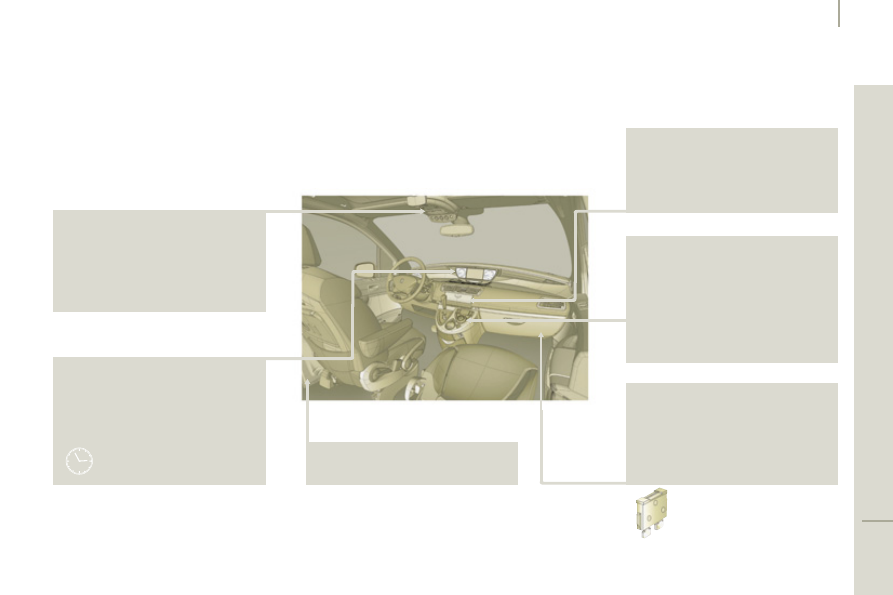Peugeot 807 (2013 year). Instruction - part 15

141
V
ISUAL
SEARC
H
10
Front interior
Instrument panels, dials,
counters 27-28
Warning lamps,
indicator lamps
29-33
Indicators, displays
34-36
Dimmer, trip recorder zero reset
36
Parking brake, handbrake
86
Heating, ventilation
54-58
- defrosting,
demisting,
- air
conditioning
A/C,
- climate
control,
- air
recirculation.
Hazard warning lamps
86
In-car Technology
Section 9
-
Peugeot Connect Navigation
(RT6)
-
Peugeot Connect Sound
Fittings 76-77
- cigarette
lighter,
- glove
box,
- cooled
compartment,
- ashtray.
Interior fuses
124-125
Mirror, toll card,
car park ticket
81-82
Sun visor, mirror/
monitoring 81,
102
Courtesy lamp, interior lighting 80
Setting the date/time
Section 9
FRONT INTERIOR